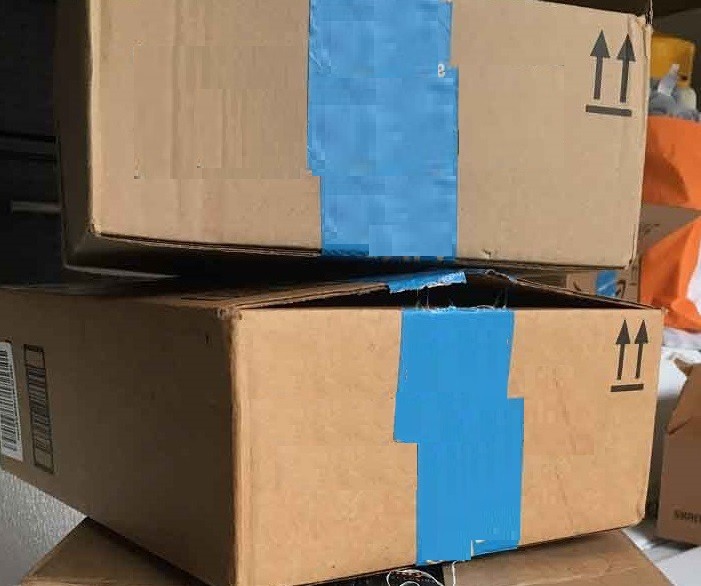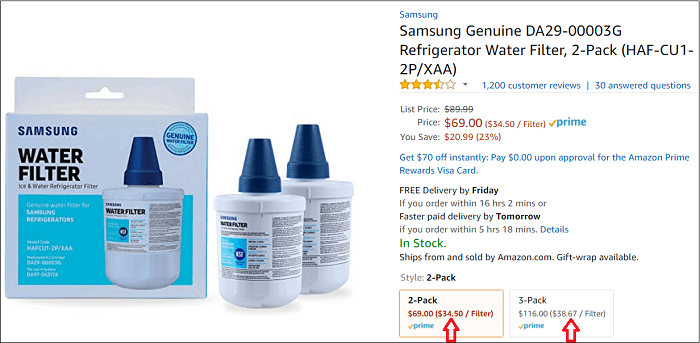Buying Items in Sets or Packs on Amazon Not Always the Best Deal
I’d love to know how the brain-trust at Amazon comes up with how they price items. I’ve recently ran into some very strange pricing that if I hadn’t being paying attention, I would have easily overpaid. Let’s break this one down with some examples so you can avoid the same fate.

Always Check the Amazon Unit Price

Our refrigerator needed a new water filter in the worst way. It had been well over a year since I changed it last and the water tasted bad.
So I hopped on Amazon and did a quick search for Samsung water filters.
I was happily surprised that the filters came in a 3-pack and was about to add it to my cart when I noticed something CRAZY.
The 3-pack cost more than the 2-pack! Over $4 more per filter to be exact.
Whatever happened to the idea of a “Quantity Discount”?
See Also: All The Stores That Offer Quantity Discounts
“Sets” Also Not Always Cheaper
The example I ran into had to do with my pool sweep and the 4 wheels that make it move.
I needed 4 new ones and the “set of 4” on Amazon was going to be substantially more expensive than if I bought 4 separate wheels.
So strange.
Is This a Common Occurrence on Amazon?
So after finding these strange pricing patterns I diligently searched Amazon for more examples.
And guess what? I found quite a few.
The ones I found were mainly in household supplies, cell phone cables, and even hardware for DIY projects.
But I think it’s save to assume that they exist in every shopping category on the online giant’s website.
Moral of the Story?
Pretty simple actually.
ALWAYS check the unit price before you make a purchase on Amazon or at ANY retailer for that matter.
You just might find that buying items NOT in packs, bundles, or sets is actually cheaper.
Ask the Reader: Have you ever noticed this strange unit pricing on Amazon? If so, what was the item?

By Kyle James
